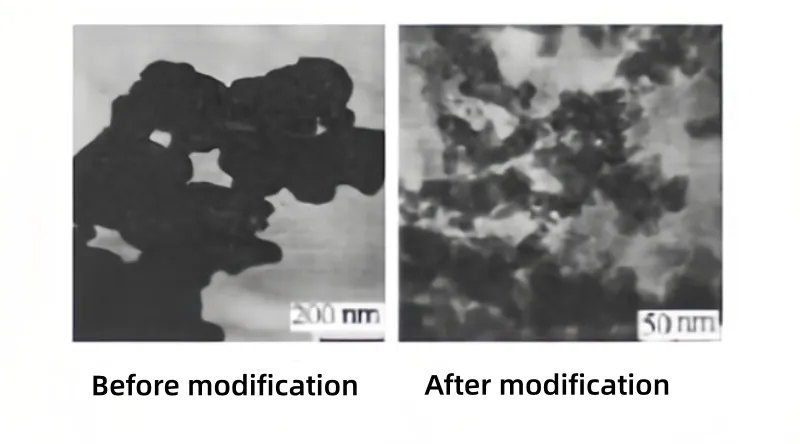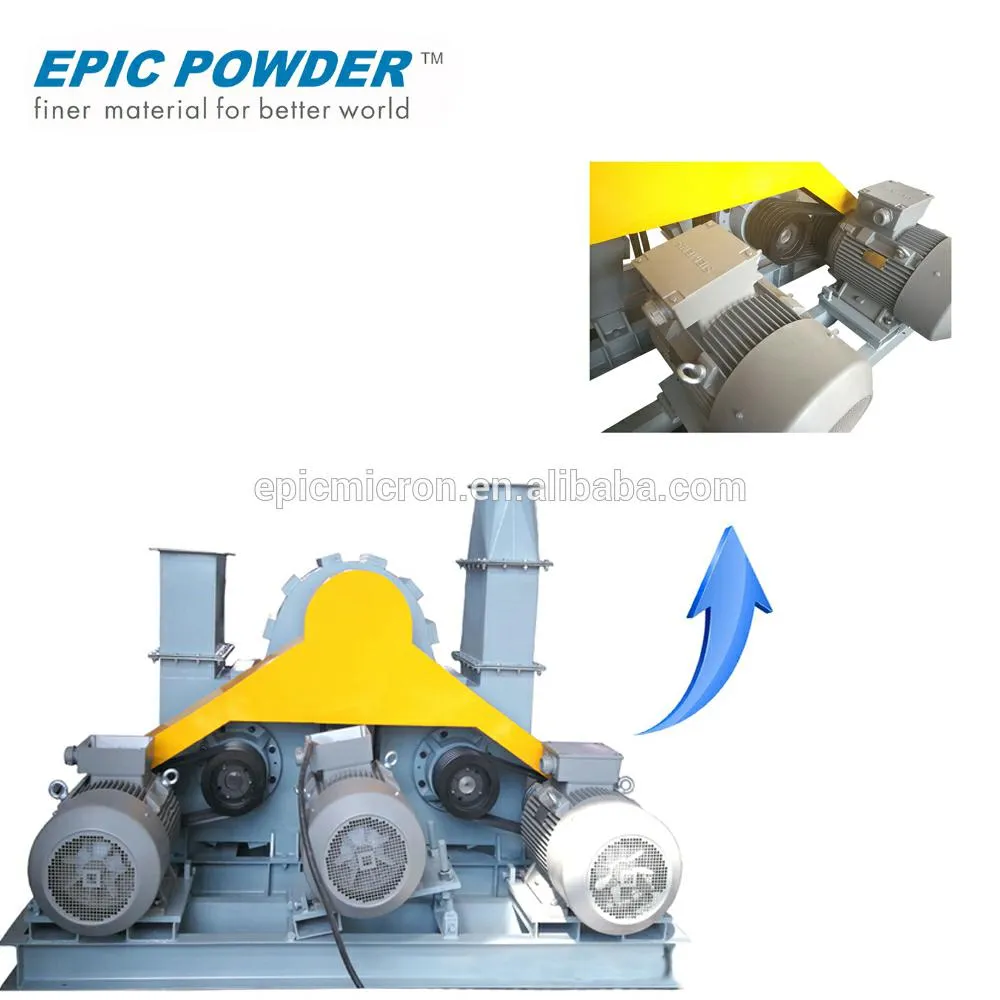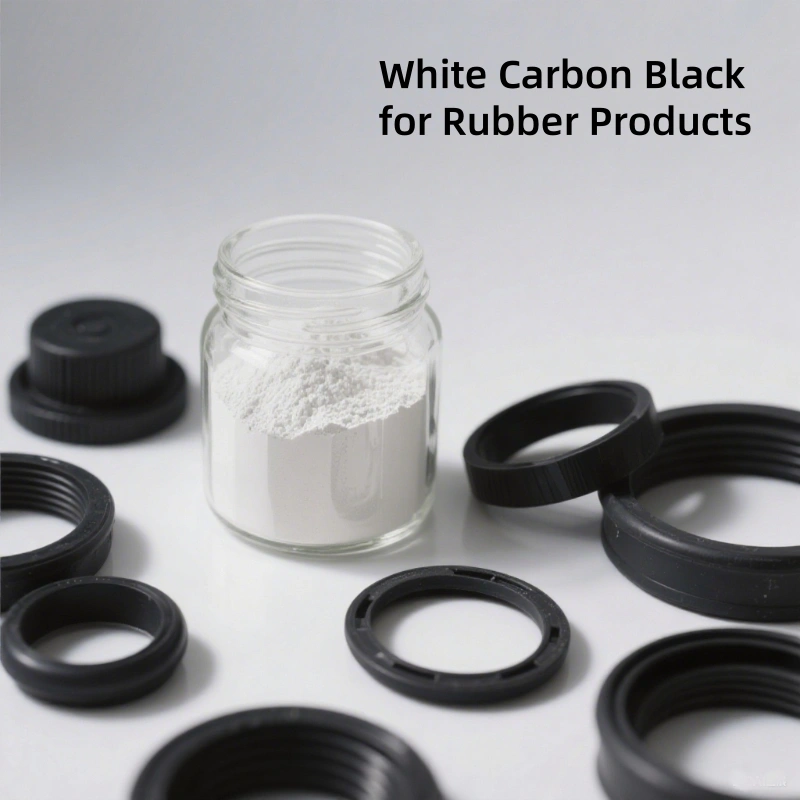규토, 이산화규소라고도 알려져 있으며 중요한 무기물입니다. 화학적인 실리카는 독특한 표면 구조와 입자 형태로 인해 뛰어난 안정성, 보강력, 증점 거동, 그리고 요변성을 나타냅니다. 이러한 특성으로 인해 고무, 코팅, 플라스틱 등 여러 분야에서 중요한 무기 충전재로 사용됩니다. 그러나 실리카의 잠재력을 최대한 활용하고 다양한 유기 매트릭스와의 상용성을 향상시키기 위해서는 표면개질 실리카가 자주 사용됩니다. 이 공정은 특정 용도에 맞게 실리카의 특성을 조정하는 데 중요합니다.

표면 개질 실리카의
내부 폴리실록산 구조와 표면 활성 실라놀기는 침전 실리카를 매우 친수성으로 만들어 유기상에서의 습윤성과 분산성을 저하시킵니다. 표면의 히드록실기는 높은 표면 에너지를 생성하여 응집을 유발하고, 이는 제품 성능에 영향을 미칩니다. 생산 과정에서 이는 응집, 친수성, 높은 비용, 낮은 효율, 그리고 과도한 에너지 소비로 이어집니다. 증가하는 환경적 압력 속에서 비용 절감, 효율 향상, 그리고 표면 소수성 향상은 특히 중요해졌습니다.
실리카 표면에는 세 가지 유형의 하이드록실기가 있습니다.
- 분리된 하이드록실기자유롭고 영향을 받지 않습니다.
- 제미날 하이드록실기, 두 개의 하이드록실기가 동일한 실리콘 원자에 결합된 경우
- 연관된 하이드록실기, 서로 수소 결합되어 있습니다.
표면 실리카의 변형 표면의 하이드록실기와 화학적으로 반응하여 실라놀기를 제거하거나 감소시키는 개질제를 사용하여 표면 특성을 변경하는 것을 포함합니다.

표면 개질 공정
개질제의 특성에 따라 표면 개질은 다음과 같이 분류될 수 있습니다. 본질적인 그리고 무기물 변형. 그중 유기 변형이 가장 널리 사용됩니다. 유기 변형의 핵심 기술은 유기 실란 처리로, 실리카 표면의 히드록시기를 유기 작용기로 대체하는 기술입니다.
유기 개질법은 일반적으로 건식, 습식, 가압 열법으로 구분됩니다. 현재 선진국에서는 흄드 실리카 개질에 주로 건식법을 사용하고 있습니다.
건식법의 장점:
- 후처리 단계가 적어 간단한 공정입니다.
- 훈증 실리카 생산 공정과 쉽게 통합됩니다.
- 대규모 산업 생산에 적합합니다.
건식법의 단점:
- 수정자의 소모가 많습니다.
- 높은 장비 표준과 엄격한 운영 조건이 필요합니다.
- 비교적 높은 생산비용.
그만큼 습식 개질법 또한 일반적으로 사용되며 주로 두 가지 접근 방식이 포함됩니다.

습식법의 장점:
- 수정자 소모량이 낮습니다.
- 간단한 공정과 필요한 장비의 감소.
- 생산 비용이 낮아지고 품질 관리가 개선됩니다.
습식법의 단점:
- 복잡한 후처리 과정.
- 환경오염 문제.
- 산업적 대량 생산에 맞게 확장하기 어려움.
또 다른 습식 수정 접근 방식에는 다음이 포함됩니다. 현장 수정 실리카 침전 과정에서 효율성과 통합성을 향상시킬 수 있습니다.
일반적인 수정자 및 수정 원칙
일반적인 개질제로는 유기 할로겐화 실란, 실란 커플링제, 실릴아민, 실록산, 알코올 화합물 등이 있습니다. 이러한 시약은 실리카 표면의 히드록시기에 화학적으로 결합하거나 치환하여 소수성, 분산성 및 유기 물질과의 상용성을 향상시킵니다.
변형 실리카의 응용

개질 실리카는 고무 제품의 중요한 강화제로, 틈새를 메워줍니다. 카본 블랙 밝은 색상의 재료에는 사용할 수 없습니다. 타이어 제조 시 변성 실리카를 첨가하면 고무의 기계적 강도가 향상되고, 히스테리시스 손실이 감소하며, 구름 저항이 낮아지고, 우수한 습윤 미끄럼 저항성을 유지합니다.
실란트와 접착제에서 변성 실리카는 분산성, 상용성 및 제품 내구성을 향상시킵니다. 코팅에서 실리카는 일반적인 무광제 역할을 합니다. 변성 실리카를 사용하면 분산성이 향상되고 응집이나 침전 문제가 줄어듭니다.
일반 실리카와 비교했을 때, 개질 실리카는 전반적인 성능이 더 뛰어나고 적용 범위가 더 넓습니다.
결론
변성 실리카는 일반 실리카의 우수한 특성을 유지할 뿐만 아니라, 향상된 소수성과 향상된 표면 특성을 특징으로 합니다. 이는 응용 분야를 크게 확장합니다. 지속적인 경제 발전에 따라 변성 실리카에 대한 시장 수요는 지속적으로 증가하고 있습니다. 변성 실리카를 위한 환경 친화적이고 비용 효율적인 대량 생산 기술 개발은 향후 실리카 제조업체의 핵심 방향이 될 것입니다.
